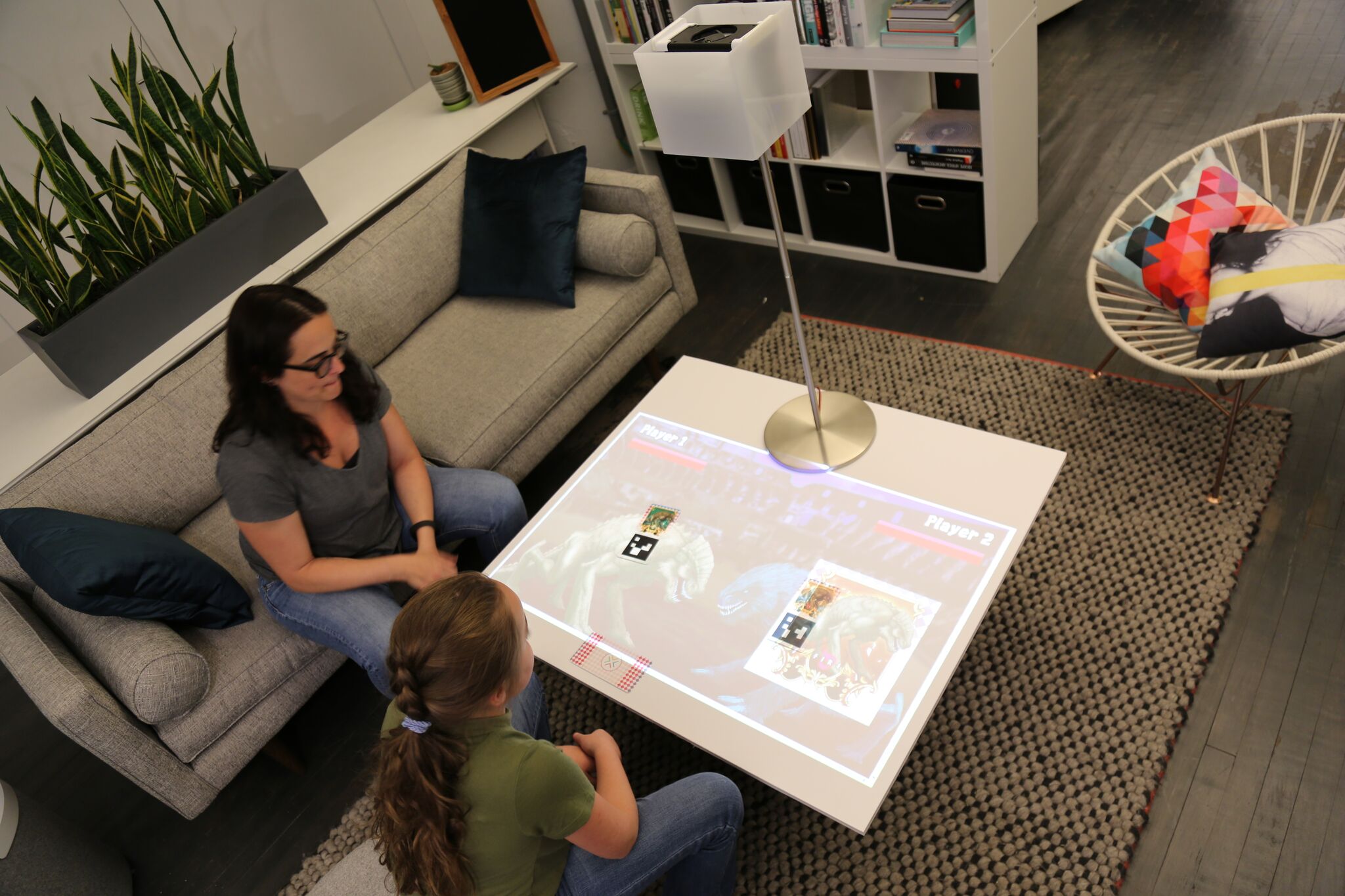Wearables, projectors offer displays for the post-screen world


One thing that hasn't changed from the dawn of the desktop PC, the smartphone and even the smartwatch has been the reliance on a dedicated piece of glass for the screen. Even voice-driven agents such as Alexa are creeping into devices with screens such as the Echo Show and Echo Spot. However, newer computing paradigms may not always be tied to a glowing rectangle attracting our gaze.
Featured
Personal Theaters
Over the past few years, we've heard much about mixed reality, which often relies on three-dimensional objects in their own world (VR) or sharing ours (AR). But there would also be benefit to a headset-based view into the traditional two-dimensional interface of today. Typically labelled personal theaters, they have been the topic of a few crowdfunding campaigns such as the one for the relatively lithe Cinego and bulkier Cinera. Both of these followed the highly successful campaign for the Video Headset (formerly Glyph) by Avegant, which has more recently turned its attention to augmented reality.
Read also: Getting started with Alexa and smart home tech for under $100
Whereas the Glyph's ability to rotate 90 degrees around its ear cups enables it to camouflage itself as a pair of headphones, Royole's Moon is a design that focuses on a luxe aesthetic, even if it's more of a gangly design supporting its noise-canceling headphones. It uses two AMOLED displays and can display 3D content even as that is likely to wane with TV companies dropping support. Unlike other products, the Moon comes with a separate video device that can includes 32GB of its own storage and accept SD cards or input from USB or HDMI sources.
Today, personal theaters are intended primarily for video consumption and not a great option for interacting with a desktop-like environment. However, we can expect significant improvements in resolution in the coming years as well as the addition of new components such as those from microdisplay maker Kopin.
Lampix
The holy grail for augmented reality is to have something observable by multiple participants without requiring any cumbersome wearables, a goal that will likely require some kind of projection technology. For now, though, one of the closest attempts to that has been created by Lampix, a New York startup. Lampix embeds a projector and depth-sensing camera inside an overhead source such as a desk lamp.
Using the combination, it can detect a number of objects and overlay information about them. In one simple demo, company representatives put down a number of different fruits under a Lampix unit, which recognizes and displays information about them alongside the objects themselves. In another, coasters bearing advertising for certain drinks can be used to initiate orders or inform bar staff of the need for a refill.
When compared to headset-based systems or even smartphone-based systems such as Apple's ARKit, Lampix's AR is significantly less engaging in part because it exists only in two dimensions. However, it compensates for this by facilitating a multiuser experience that doesn't encumber those interacting with it.
Read also: Google's ARCore spurs bevy of AR app releases
Indeed, its interactions with two-dimensional objects hearkens back to Microsoft's original Surface table computer, now marketed as PixelSense. But while Lampix is targeting some of the same commercial markets such as retail, foodservice, and hospitality, it can deliver much of that functionality at a fraction of the price. That doesn't even include the liability of using much glass that could be subject to dropped objects, spilled beverages, and other abuse. Lampix devices will run Linux out of the gate and were recently offered for a backer price of $400 in an unsuccessful Kickstarter campaign.
Smart home suites match up devices for security and convenience
PREVIOUS AND RELATED COVERAGE
VR and AR: The Business Reality
Virtual Reality and Augmented Reality are going to be useful for far more than just gaming. We explore the ways the technology will be used for training, marketing, product design, and much more.
Avegant leapfrogs HoloLens with light field AR
https://www.zdnet.com/article/avegant-leapfrogs-hololens-with-light-field-ar/The makers of the Glyph personal theater headset have tapped into the future of augmented reality. But you'll have to wait to experience it.
With Enterprise Edition, Google Glass finds its ROI calling
https://www.zdnet.com/article/with-enterprise-edition-glass-finds-its-roi-calling/Glass's vision as an everyday digital overlay onto the real world was overly ambitious, but the Enterprise Edition scales back enough inhibitors to make Glass a competitive AR option.